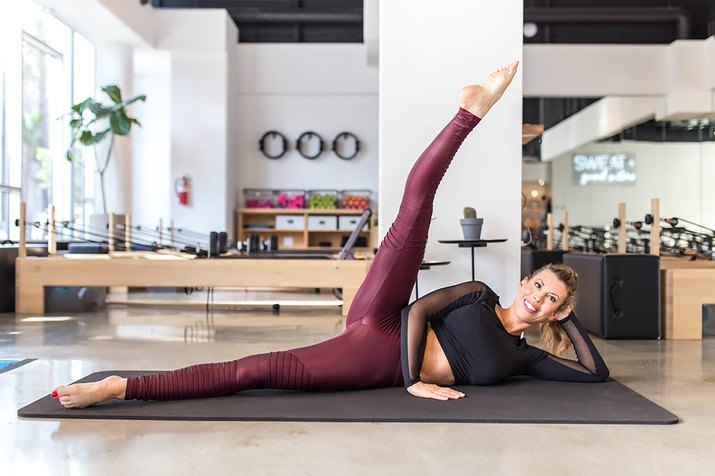
Pilates For Knee, Back or Neck Pain
Pain can make a sunny day seem like a dark and stormy one. But Pilates can help alleviate joint pain by targeting the smaller muscles as well as the larger primary movers to support joints and the body as a whole.
The focused approach of Pilates has made it a go-to for physical therapists and people looking to feel better on a daily basis. The following moves can be practiced every day to improve your overall health and round out your exercise routine. You'll need a resistance band for two of the exercises, but if you don't have one you can use a towel or go without.
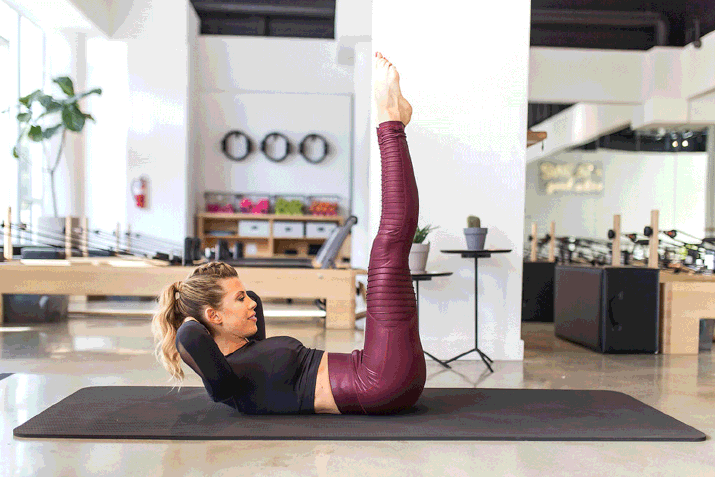
1. Lower Lift
Strengthening the core — and specifically the lower abdominals — helps to support the hips, pelvis and lumbar spine, which in turn can help ease lower-back pain. If the core is strong, the pelvis more easily falls into its natural alignment and the discs of the lumbar spine (aka lower back) will lift and line up more naturally.
- Lie on your back with your knees tucked into your chest.
- Curl your head and chest up and stack your hands palm-over-palm behind your head.
- Extend your legs toward the ceiling.
- Lower your legs to a 45-degree angle, then lift your legs back up. If you're new to Pilates, you can bend both knees instead of extending them toward the ceiling.
- Imagine a zipper under your navel, and then zip that zipper to lift legs back up. This will help those deep lower abdominals engage and lift the legs versus your hips or back.
- Perform 10 reps.
Read more: 19 Ab-Sculpting Pilates Moves You Can Do at Home
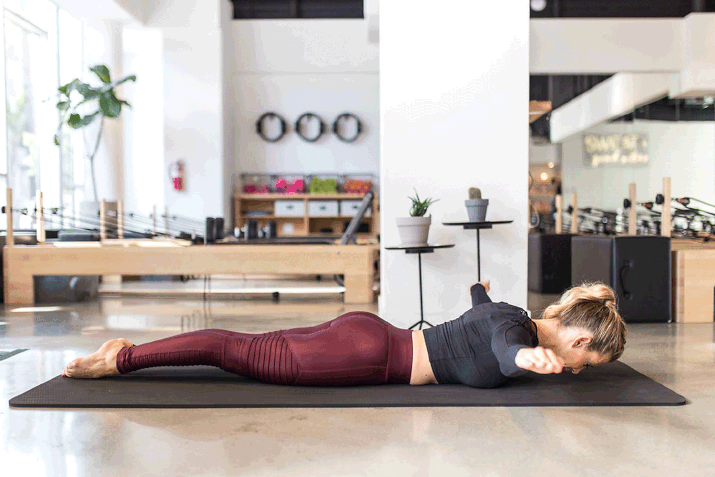
2. T-Pull
This move strengthens the muscles of the back while allowing the body to stay in a fairly balanced and safe position. It also trains the lower abs to support the lower back while those back muscles get stronger. Bonus: You work the postural muscles of your upper back as well.
- Lie on your stomach with your legs together and arms opened out in a T position.
- Slowly reach your arms down toward your hips as you lift your head and chest off the floor.
- Hold, then reach back with your fingers stretched long and open wide as you lower your chest back down.
- As you reach out and away from your core, keep your abs scooped in and up along your spine.
- Only lift a few inches off the mat and perform for 8 reps.
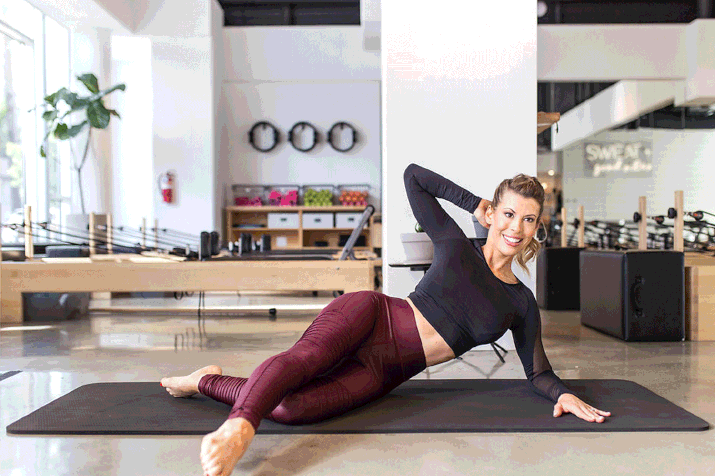
3. Front Picque Taps
This move strengthens the gluteus medius, which helps to support the hips, pelvis and lower back and plays a crucial role in keeping the hips strong and free of pain. Targeting this area will help the hip flexor in the front to not try to grip and take over the show when you are moving, which also helps with knee and back pain.
- Lie on your side, bend your knees and prop yourself up on your elbow.
- Extend your top leg straight out in front of your hip.
- Hover that top leg parallel to the floor.
- Pulse up and down about three to five inches 15 to 25 times, and then switch to the opposite side.
- Imagine a wall against your back that won't allow your hips to move. All the work here is happening in the side of the glute.
Read more: A Pilates Instructor's Secrets to Long, Lean Legs
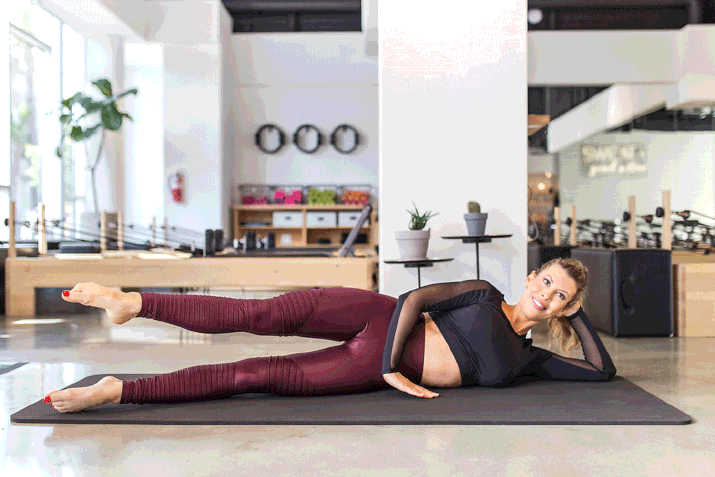
4. Develope Kicks
This simple exercise is a truly fantastic way to focus on and target the outer hip safely while stretching it as well, which is great for an area that commonly holds tension and can get compression from sitting in cars, at desks or walking. Make this movement fluid. And only make the range of motion as big as your body can go without the hips moving back and forth.
- Lie on your side with your head resting in your hand and your legs extended out straight.
- Bend your top leg in and up toward your side and draw your toes toward your bottom leg.
- Unfold your top leg up and extend it toward the ceiling, keeping your toes pointed.
- Reverse the motion until your leg is back down in the starting position.
- Repeat 15 to 25 times on each side.
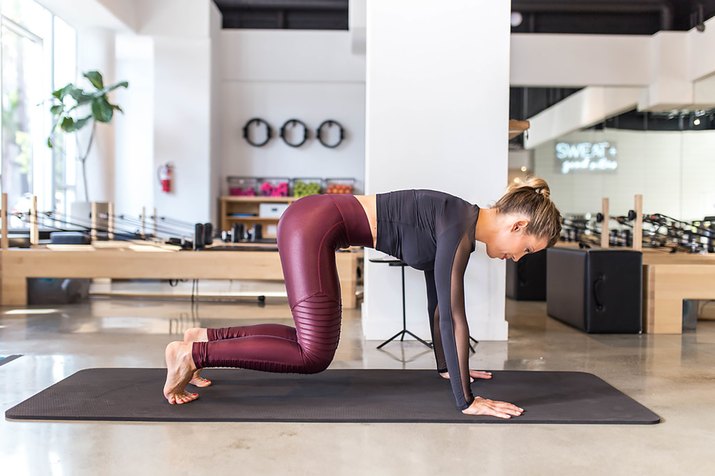
5. Knees Off Hold
This at-home exercise replicates one of the most recommended physical therapy exercises to strengthen the knees. The lifting action activates and strengthens the quad connection without adding any pressure. This will help support the meniscus, ACL and PCL of the knee.
- Come onto your hands and knees with hands directly under shoulders and knees directly under hips.
- Round your back up toward the ceiling.
- Keeping your knees over your hips, lift your knees a few inches off the mat. Think about lifting from the core versus pressing down into the wrists.
- Hold for 30 seconds and lower back down. Repeat one more set.
Read more: Bad Knees? Try These 14 Knee-Strengthening Exercises
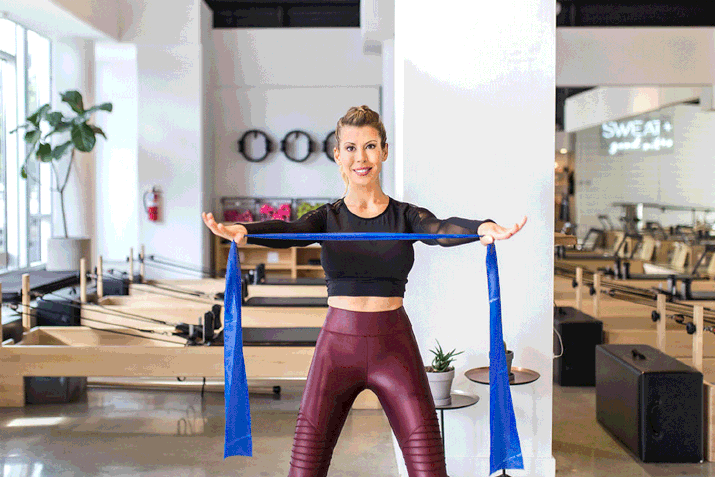
6. Thoracic Extension
This exercise is about more than just stretching out of the neck: It tackles the bigger issue of lengthening the muscles while strengthening them and training them not to hold tension.
- Stand with your feet hip-distance apart while holding a resistance band at shoulder-distance in front of your chest.
- Bend your knees and reach the band up toward the ceiling, gently pulling the band outward.
- Open your chest as you look toward the ceiling, and then reach the band back behind your head.
- As you look toward the ceiling, keep your shoulders away from your ears and don't let your neck and head hang too far back.
- Lift the band back toward the ceiling while keeping your knees bent. Straighten your legs and reach the band in front of your chest.
- Do 6 reps.
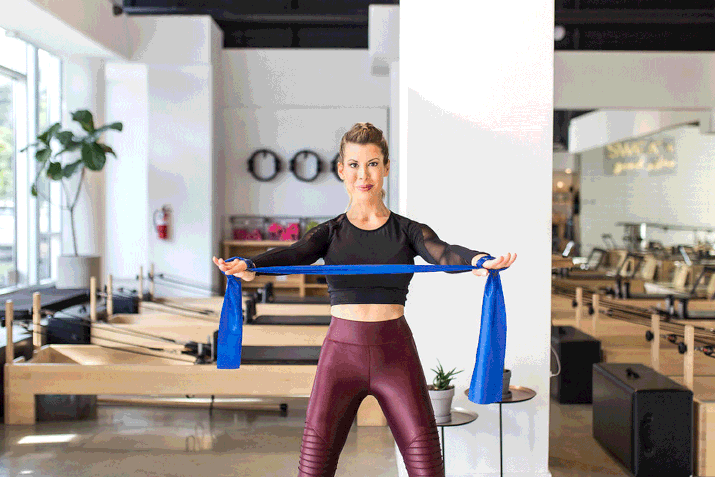
7. Flipping Pulses
Think about actively pressing out with the entire flat palm and moving from the entire arm, not just the fingers. That way, this lengthening exercise will safely strengthen every part of the wrist without putting undue pressure or tension on wrists.
- Stand with your feet hip-distance apart and hold a band between the thumb and index finger out in front of your chest.
- Wrap the band (or towel) around your hands once.
- Gently press out into the band and flip your hands to face down toward the floor.
- Still gently pressing out, flip your hands back up to face the ceiling.
- Actively draw shoulders down your back throughout the exercise to keep the work in the lats and traps.
- Repeat 10 times.
Read more: 13 Exercises to Help You Recover From an Injury
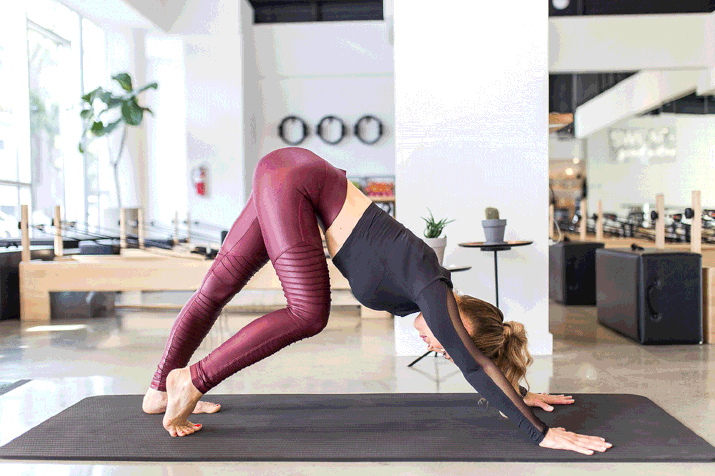
8. Running Heels
Although this move may seem somewhat basic, it's the best way to stretch the calves, ankles, Achilles tendons and arches of the feet. Practicing this move daily can help prevent and treat plantar fasciitis, which is essentially a painful tightening of this zone that translates down to the arches and bottoms of the feet.
- Start in a Downward-Facing Dog (hands and feet on the floor with the hips lifted up toward the ceiling).
- Actively press your heels down toward the mat, stretching and lengthening the backs of the legs.
- Lift one heel while pressing the other down.
- Switch heels and "run" with slow, deliberate control.
- Lift each heel as high as you can while the other presses as low as possible.
- Do this for 30 seconds.
Read more: A 20-Minute Stress-Busting Pilates Routine
Video of the Day
Video of the Day